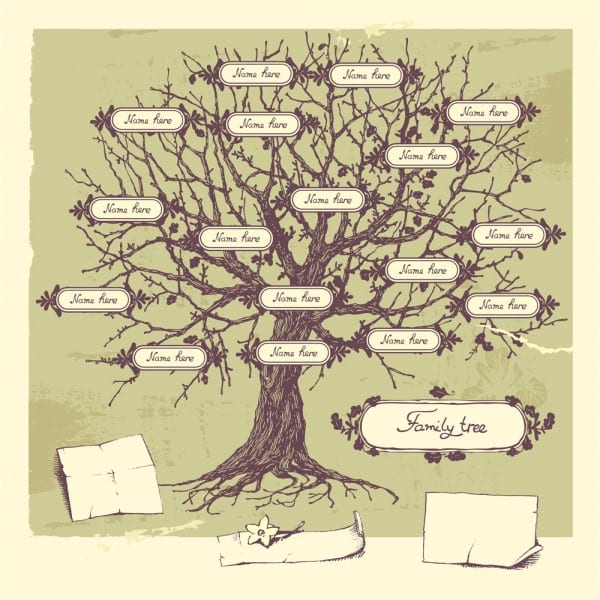Starting to trace your ancestors, you may have quickly realized that it can be very challenging to identify which William Brooks is your ancestor, when there are three or four in the right town in the right decade! Sometimes it seems the only thing to do is to slog through all the possible records in order to eliminate one after another. There does not seem to be any shortcut to this digging deep process – or is there? Here are a few ideas to help you in your genealogy name searches.
Find all the details you are certain that you know about your particular ancestor:
Take one piece of paper, and with your problem ancestor’s name and birth date at the top, list all these details down the left side, and try to keep the details in a chronological order. For instance, you will write down many of the following details: full name, birth date, place, residence(s), names of his parents and their country or place of birth, with their birth dates, names of your ancestor’s brothers and sisters in full with their birth dates and place of birth, occupation(s) of your ancestor’s parents and grandparents and siblings as well as your ancestor, religion and specific church (place) if possible, military service (what, when, where, medals, pensioned), land ownership, named in wills or land purchase/sales, marriage details including witnesses and priest, minister or pastor. Everything.
In this way, as you look at the various potential ancestors, you will soon see that one person can be eliminated because, for instance, the children in one of the censuses have very different names – they do not match the usual naming patterns. Or because his wife’s birth date shows she would have been too old (over 45) to have had those three children.
Write down possible sources you could search which would help you prove your ancestor:
On the right side of your long list, start thinking about what kinds of resources might have information to help you decide on which ancestor is definitely “yours”. You are always working from the “known” to the “unproven”, so you do already know the name or names of children of your ancestor. Those children with your ancestor and wife may help you be more certain you have the correct ancestor. Using several censuses may help, for example, or finding specific names on a will, or a widow’s application for a pension, details of an obituary in historical newspapers: these are just a few ideas to use when researching your family history.
Make a list of the sources you have searched that did NOT have your correct ancestor’s details:
Negative information is still excellent information – and it will save you doing the same search over and over again for that same wrong person! Keep a record of your research. It is possible that the “wrong person” is actually a sibling or cousin of your ancestor, and you may want to go back to that record source in the future.
Research records of brothers and sisters to confirm information on their parents:
If you are having difficulty in identifying a particular direct ancestor, you may have more success with the siblings’ (brothers, sisters) records. For example, if you are looking for a great-grandfather and his wife, perhaps the records of a grandfather’s sister or brother may be searched for details. I was able to find both great-grandparents’ full names and countries of birth from a death registration of a grandfather’s sister. Researching through siblings can be very rewarding, and may help confirm details you need to prove one more generation back in time.
Shortcuts? There are no real shortcuts in genealogy research, BUT there are excellent ways to help you as you research your ancestors and build a family tree with all the correct individuals! When you are having challenges with identifying which ancestor is yours, follow the above guidelines for greater success. Enjoy your searches.

